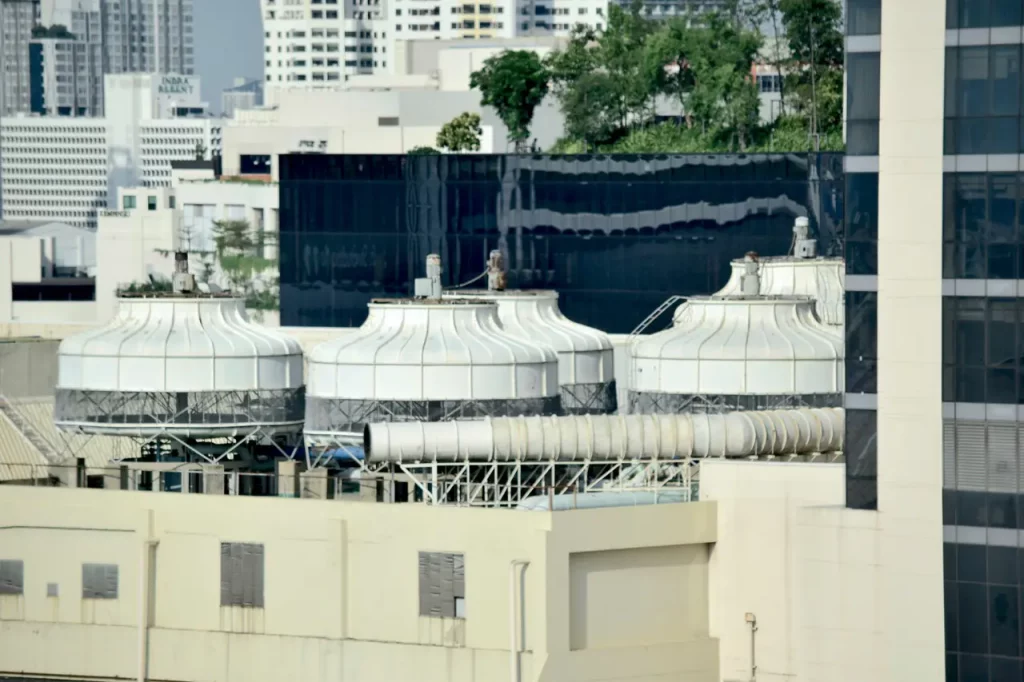On August 4th, 2025, the New York City Health Department reported that since July 25, 2025, 58 people had been diagnosed with Legionnaires‘ Disease (LD) during a community-associated outbreak in Central Harlem.1 Two people had died.1 Initial investigations revealed 11 cooling towers tested positive for Legionella pneumophila these systems were remediated in the short term.
2
By August 29th, officials confirmed 111 LD cases and six deaths. 3,4,5 On the same day, the New York Times reported that genotyping identified the Harlem Hospital cooling tower and a nearby construction site cooling tower as infection sources.3,4 The New York City Health Department declared the outbreak officially over on August 29th, 2025: no new cases had been reported within the maximum incubation period of 14 days.4,5 In total, 114 LD cases were confirmed, 90 people were hospitalised, and seven died.
4,5
As a result of this outbreak, health authorities proposed policy changes to avoid further similar outbreaks, which include
- more frequent inspections of cooling towers by Health Departments
- proactive sampling of building cooling tower systems
- mandatory Legionella sampling every 30 days during cooling season (instead of the current 90-day requirement)
In New York City, building owners are legally required to register cooling towers. However, the critical question remains: who verifies that this actually happens? Are the existing registration lists complete? If yes, why did it take almost two months to identify the oubreak source and eliminate it? If dutyholders had fully complied with existing requirements, could this outbreak have been avoided? 5
Cooling Towers as LD infection reservoirs
Cooling towers have repeatedly been identified as sources of large community-acquired Legionnaires‘ Disease outbreaks. They can expose many people simultaneously with contaminated aerosols. In Europe community-acquired LD cases account for the majority of reported infections, with documented cases increasing by 46.6 % between 2020 and 2021, totaling 8,276 in 2021.6 In response, many countries have introduced stricter regulations for documentation, maintenance, and sampling of cooling towers, in the last years.
Where cooling towers‘ presence and regular sampling results are properly documented and reported to local Public Health Departments, outbreak source investigations can be much faster and more effective. In countries without such frameworks, Public Health officials must start investigations from scratch, leading to delays and higher infection risks fort he public.
My short review of the New York City Department of Health’s public cooling tower register reveals gaps: some towers show only one inspection years ago, others had violations noted with follow-up inspections not until the following year.7 Do such practices adequately protect the public from LD outbreaks?7
A look at Germany
In Germany, the 42nd Ordinance for the Implementation of the Federal Immission Control Act (42. BImSChV) has been in force since March 3rd, 2018, regulating operation, documentation, and maintenance of cooling towers. 8 Accordingly, and among other obligations, the Dutyholder has to internally check chemical, physcial or microbiological parameters biweekly to ensure hygienic status of water within the cooling tower; additionally, water has to be sampled for Legionella at least monthly.8
As always: Shared responsibility & interdisciplinary Water Management Teams
Water Hygiene awareness is essential across all sectors – from public health officers to physicians to engineers, cafility managers, policymakers, scientists and building owenrs. Only a joint effort by all stakeholders can minimize infection risks and safeguard public health.
Do you want to find out more and discuss about correct and compliant cooling towers hygienic management? Please contact us here.
1 https://www.nyc.gov/site/doh/about/press/pr2025/nyc-health-provides-second-legionnaires-cluster-update.page accessed September 18th, 2025
2 https://brooklyneagle.com/articles/2025/08/21/death-toll-from-legionnaires-disease-outbreak-in-new-york-city-rises-to-6-and-infections-hit-111/ accessed September 18th, 2025
3 https://www.nytimes.com/2025/08/29/nyregion/nyc-legionnaires-disease-harlem-hospital.html accessed September 18th, 2025
4 https://abc7ny.com/post/legionnaires-disease-outbreak-nyc-health-department-declares-cluster-harlem-officially/17684717/ accessed September 18th, 2025
5 https://www.nyc.gov/site/doh/health/health-topics/legionnaires-disease.page accessed September 18th, 2025
6 European Centre for Disease Prevention and Control. Legionnaires’ disease. In: ECDC. Annual Epidemiological Report for 2021. Stockholm: ECDC; 2023. https://www.ecdc.europa.eu/sites/default/files/documents/legionnaires-disease-annual-epidemiological-report-2021.pdf accessed September 18th, 2025
7 https://www.nyc.gov/site/doh/business/permits-and-licenses/cooling-towers-inspection-results.page
8 Verordnung über Verdunstungskühlanlagen, Kühltürme und Nassabscheider vom 12.Juli 2ß17 (BGBL. I S. 2379; 2018, S. 202) https://www.gesetze-im-internet.de/bimschv_42/BJNR237900017.html accessed September 18th, 2025
Photo by Nopparuj Lamaikul on Unsplash

